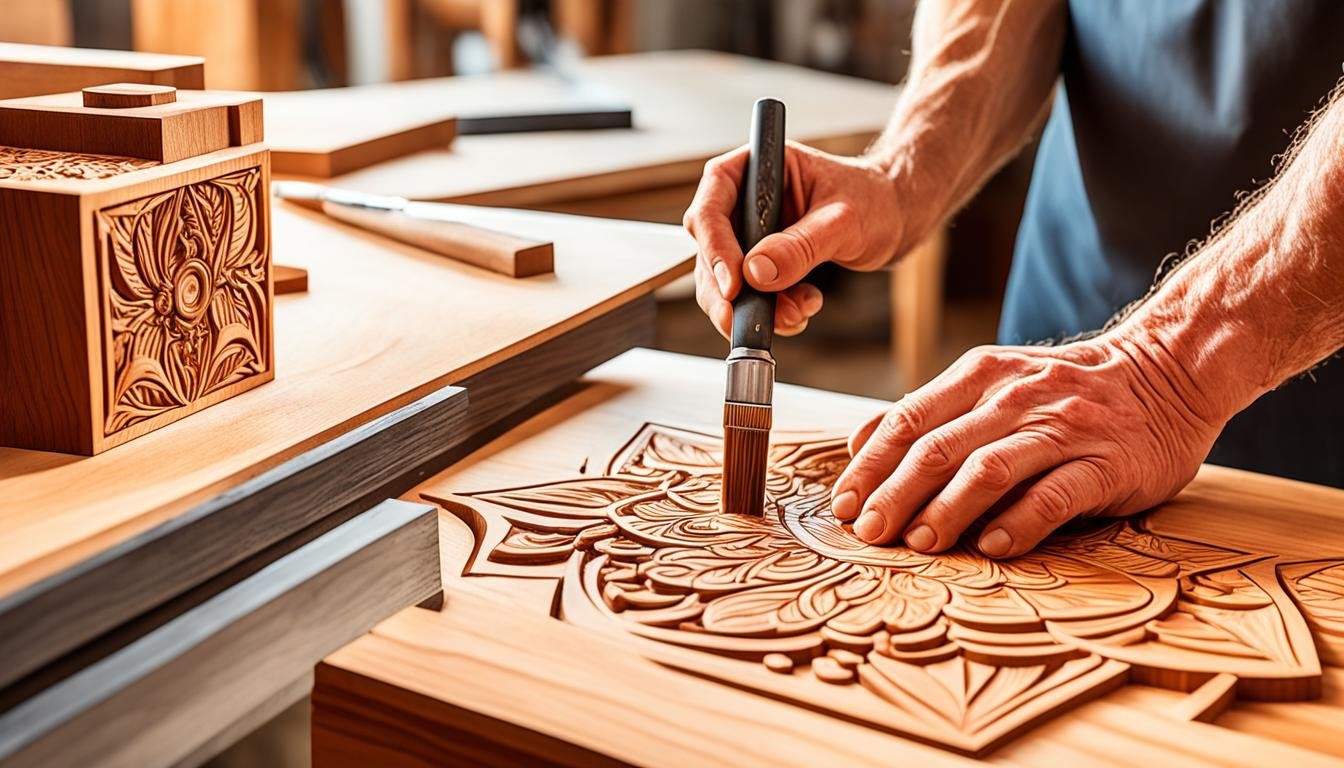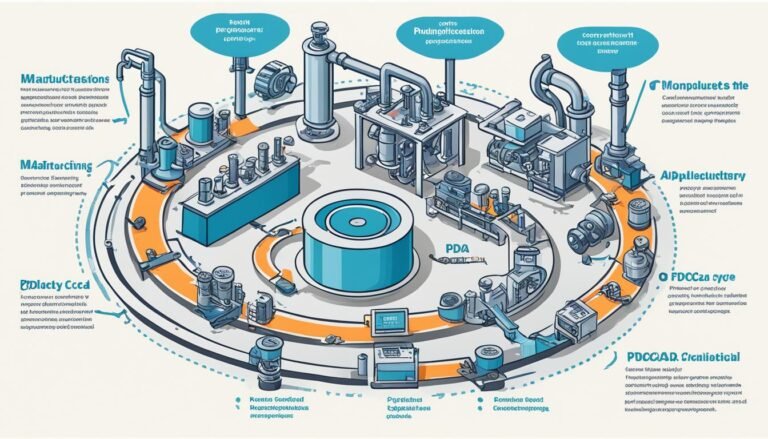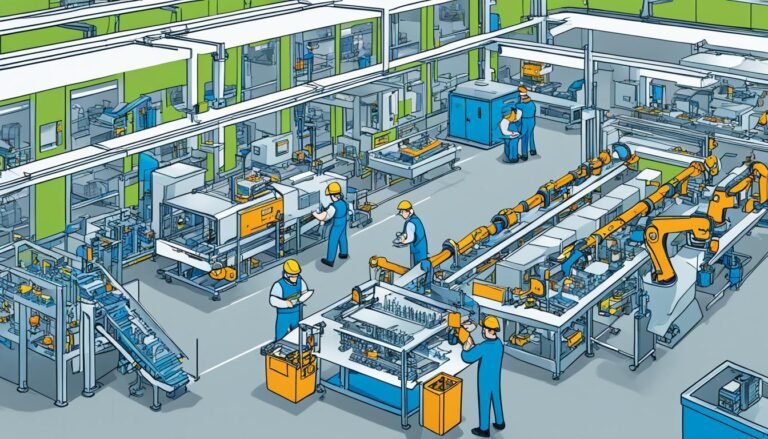Furniture Manufacturing: Quality Craftsmanship
Did you know the global furniture market is set to hit $750 billion by 2027? This huge industry combines quality furniture making with new manufacturing ways. From the beauty of handcrafted wooden items to the speed of modern furniture assembly, each piece shows off skilled work and new tech.
Furniture is more than just useful; it shapes our living spaces with beauty and function. Makers use old and new methods to create items that look great and work well. Their focus on making furniture shows in every piece, proving their commitment to quality and detail.
Key Takeaways
- The global furniture market is projected to hit $750 billion by 2027.
- Quality furniture combines traditional craftsmanship with modern technology.
- Handcrafted wooden furniture brings unique aesthetic and functional value to our homes.
- Furniture assembly processes are integral to creating sustainable and durable pieces.
- Furniture manufacturers are dedicated to producing pieces that enhance both living spaces and lifestyle experiences.
The Art of Furniture Manufacturing
In furniture making, old woodworking skills meet new technology. This mix brings together art and precision. Traditional methods like detailed joinery and carving are still key. But, modern tech also brings precision and speed.
Traditional Techniques vs. Modern Technology
Traditional methods are still highly valued in furniture making. These skills, developed over many years, focus on craftsmanship and detail. Joinery, for example, makes strong connections without nails or screws, showing the craftsman’s talent.
But, modern tech like CAD and CNC machines have changed the game. They let makers make parts fast and tailor furniture to what clients want. This mix of old and new makes making furniture both artistic and efficient.
Now, makers use advanced machines to make sure each piece is perfect. This mix of old and new ensures custom furniture is both beautiful and strong.
This mix of traditional and modern is clear in making custom furniture. Craftsmen can now improve their designs. They use old skills with new tools to make furniture that’s both classic and new.
The Manufacturing of Furniture
In the world of furniture making, picking the right material selection is key. This step affects how long the furniture lasts, how it looks, and if it’s good for the planet. Companies often choose strong hardwoods, engineered woods, and sustainable materials. These materials make furniture that lasts a long time.
Material Selection and Sourcing
The first step is to find the best raw materials. Furniture suppliers work with office furniture manufacturers. They look for top-quality woods and materials like bamboo and reclaimed wood. These are known for being good for the environment.
Steps in the Manufacturing Process
Turning raw materials into furniture takes many steps. Each step needs care and focus, including:
- Framing: Building the basic structure.
- Assembly: Carefully putting parts together.
- Finishing: Adding the final touches for looks and durability.
Importance of Skilled Labor
Skilled craftsmanship is key to making top-notch furniture. Skilled workers, trained in both old and new methods, make sure each piece is perfect. They focus on every detail, from how the pieces fit together to the finish.
| Manufacturing Step | Description |
|---|---|
| Material Selection | Choosing durable and sustainable materials. |
| Framing | Building the core structure. |
| Assembly | Joining components with precision. |
| Finishing | Adding polish for aesthetics and protection. |
| Quality Check | Ensuring adherence to standards. |
Upholstery Materials and Techniques
Upholstery is key in making furniture look good and feel comfortable. It uses materials like natural cotton, jute webbing, and latex rubber foam. Choosing these materials right makes furniture look great and last long.
Natural cotton is loved for being soft and breathable. It gives furniture a luxurious touch, making it a top pick for fancy furniture.
Jute webbing is also crucial in upholstery. It’s strong and flexible, keeping furniture’s shape and providing steady support. When combined with latex rubber foam, it makes furniture comfy and long-lasting.
Latex rubber foam is known for its bounce and support. It shapes to your body for better comfort and relief. Plus, it fights mold and dust mites, great for those who care about health.
For top luxury, furniture makers use 100% white goose down. This top-notch material adds unmatched softness and comfort. Mixing it with strong materials like latex rubber foam creates furniture that’s both lavish and supportive.
Upholstery is more than just picking materials. It’s about hand-stitching and precise cutting too. Skilled workers combine top *upholstery materials* with classic and new techniques. This makes furniture that’s truly a masterpiece.
In short, picking and using materials like natural cotton, jute webbing, latex rubber foam, and 100% white goose down is key to making quality upholstered furniture. These materials and traditional and modern techniques ensure furniture that looks good and lasts long.
Sustainability in Furniture Manufacturing
Sustainability is now key in the furniture making world. It meets the need for eco-friendly furniture that customers want.
Eco-Friendly Materials
Using eco-friendly materials is a big part of making furniture sustainable. Reclaimed wood is a top pick for its look and eco benefits. Companies also choose materials that are kind to the planet.
Sustainable Manufacturing Practices
It’s important to make furniture in a way that’s good for the earth. Companies are cutting down on waste and emissions. They use low VOC adhesives and water-based finishes to help.
Consumer Demand for Sustainability
Customers want furniture that’s good for the planet. This drives brands to make more eco-friendly products. By focusing on sustainability, brands help the environment and please their customers.
The Role of Computer-Aided Design (CAD) in Modern Furniture
Computer-aided design (CAD) is changing how we make modern furniture. It brings new levels of precision and efficiency. Designers can now create complex and ergonomic designs that fit exactly what people need.
One big plus of CAD in furniture is the ability to customize designs in detail. Whether it’s a special ergonomic chair or a desk that does many things, CAD lets us make each piece just right. This has led to more ergonomic designs that are both comfy and trendy.
Using CAD also makes making furniture faster and cheaper. It cuts down on mistakes, so what you get is exactly what you wanted. This means furniture brands can quickly meet customer needs, offering top-notch furniture fast.
Here’s a look at how traditional design compares to CAD-driven design:
| Aspect | Traditional Design Process | CAD-Driven Design |
|---|---|---|
| Time Efficiency | Long design and prototype phases | Quick changes and adjustments |
| Precision | Prone to human error | Very accurate and consistent |
| Customization | Limited by manual techniques | Many customization options |
| Cost | More expensive due to manual work | Cheaper with automation |
Quality Control and Durability
Ensuring furniture is both quality and durable is key for brands and customers. From the start to the end, strict quality checks are crucial. These checks include testing, meeting standards, and listening to what customers say.
Testing Procedures
Testing starts the journey to making furniture that lasts. Each piece is checked to make sure it can handle daily use. This means looking at how strong the joints are, how materials hold up, and how finishes last.
Brands like Herman Miller and Steelcase lead the way. They use the latest machines and tech to test furniture under real-life conditions.
Standards and Certifications
Following industry standards and getting certifications is a must for quality furniture. The Business and Institutional Furniture Manufacturers Association (BIFMA) sets these standards. Certifications from Greenguard and FSC show a brand’s care for the environment and quality.
This ensures trust and shows a brand’s focus on quality control.
Customer Satisfaction and Feedback
Customer happiness is what makes a furniture piece a success. Getting feedback from customers is key to quality control. Brands like IKEA and Wayfair ask for reviews and surveys to learn what customers think.
This helps them make their furniture better and last longer. By listening to customers, brands can keep improving and meet their customers’ high standards.







